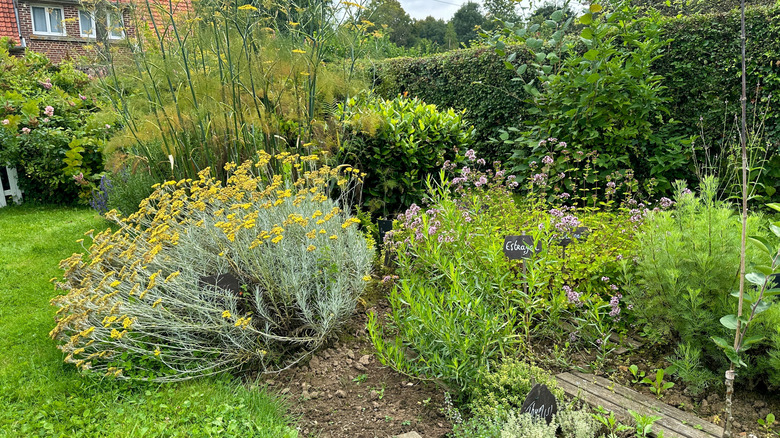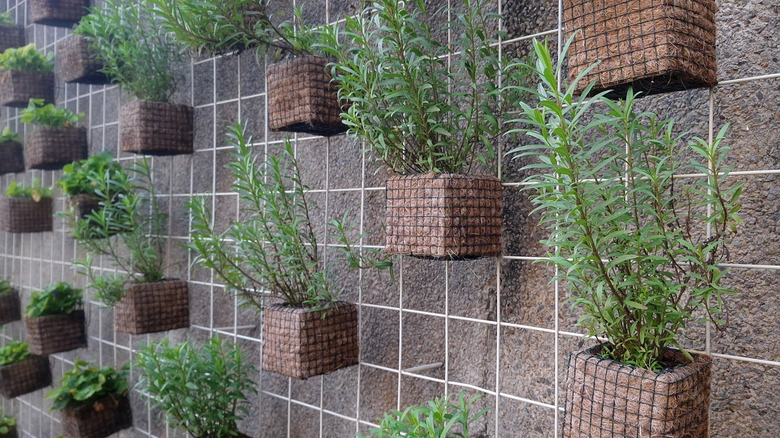The Hardy, Flavorsome Herb That'll Grow Well In Shady Areas Of Your Garden
One of the greatest perks of having your own herb garden is being able to snip fresh sprigs whenever you may need them, whether that's garnishing a dish or simply bringing some greenery indoors. Artemisia dracunculus, or tarragon, is a classic addition to any good chicken salad — particularly the French variety 'Sativa,' which brings in a subtle anise-like sweetness – and it can even flourish in gardens swathed in shade.
Ensuring adequate shade is especially important in areas where temperatures reach over 90 degrees Fahrenheit, and too much heat or humidity can reduce the quality of its leaves. It's even able to survive in the cold, withstanding temperatures as low as -30 degrees Fahrenheit, meaning its best chances of survival are for those with gardens in USDA Plant Hardiness Zones 4a to 8.
It's a perennial plant and, once established, should be rejuvenated every three years. In addition to preferring shady areas of your garden and milder temperatures, tarragon also prefers well-draining soil areas, such as raised beds or areas with good runoff. Whatever you do, however, don't overwater this herb, as it can lead to root rot.
How to propagate and plant tarragon in shady gardens
Tarragon, including the French variety, is not an invasive species and is actually considered native to North America. However, French tarragon doesn't produce seeds due to its barren blooms, so if you want to grow it in your garden, it's best to purchase an already established plant or to get some stem cuttings from a friend. If you're starting with cuttings, ensure they root in potting mix or water before transplanting to your herb garden in late fall or early spring.
While tarragon will grow in shady areas of your garden, plant it in a spot that gets some morning sunshine. Pair it with crops like eggplant, which not only benefits from tarragon's natural pest-repelling scent but also make good neighbors as the two don't compete for light or nutrients. This smart planting combination can lead to healthier harvests due to less reliance on chemical pesticides. Not every crop or herb loves to be neighbors with tarragon, however. Mint and fennel, for example, are two herbs you'll want to avoid growing too close to tarragon as they are known to compete for nutrients and space, which can limit healthy growth.
Once planted, tarragon is a relatively low-maintenance herb. It prefers dry conditions and will only need watering if the top inch of soil has lost all moisture. Avoid rich fertilizers as this can reduce tarragon's flavors, and instead refresh the soil a couple of times a year with a layer of compost. The most important thing to remember with tarragon is to prune regularly, which encourages healthy growth and a more robust flavor to the herb.

